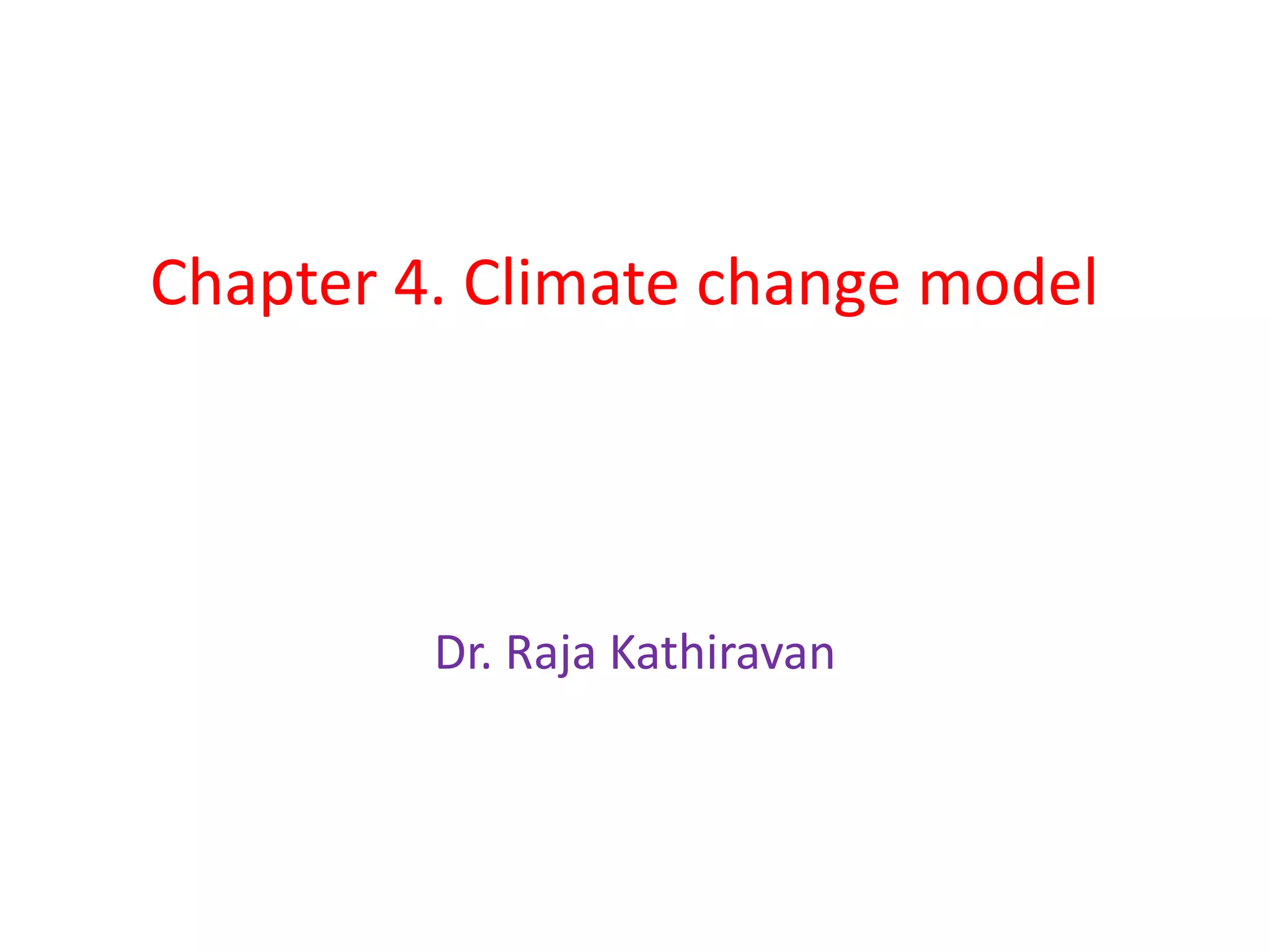Climate models are computer programs that simulate weather patterns over time. There are three main types of global climate models: Earth balance models, Earth models of intermediate complexity, and general circulation models. The first climate model was developed in the late 1960s and combined atmospheric and oceanic processes. Climate models help scientists make climate predictions and test theories to better understand the climate system.

















![• Note that (1) is an autonomous ordinary differential equation (ODE),
meaning that the expression for the derivative does not explicitly involve
the independent variable t. Values for the parameters are:
• R = 2.912 W-yr/m2K) [Ichii et al. 2003, Table 1]; Q = 342 W/m2 [Kaper
and Engler 2013, 17], α = 0.30 [Kaper and Engler 2013, 17], and σ = 5.67
X 108 W/m2 K4.
Earth Models of Intermediate Complexity (EMICs) :
• an important class of climate models, primarily used to investigate the
earth's systems on long timescales or at reduced computational cost.
• are of medium complexity compared to the other two models.
• They are three-dimensional in that they represent physical processes in
three dimensions, including the atmosphere, oceans, land, and the
cryosphere, or sea ice and glaciers on land.
• Compared to the other types, these models can predict climate over
longer time scales of several 10,000 years or glacial years. The
disadvantage is that they only consider the natural Earth system and not
the interaction between humans and nature. They also have coarse
resolution.](https://image.slidesharecdn.com/chapter4climatechangemodel-230427053512-2b5b88fb/75/Chapter-4-Climate-change-model-pptx-18-2048.jpg)






